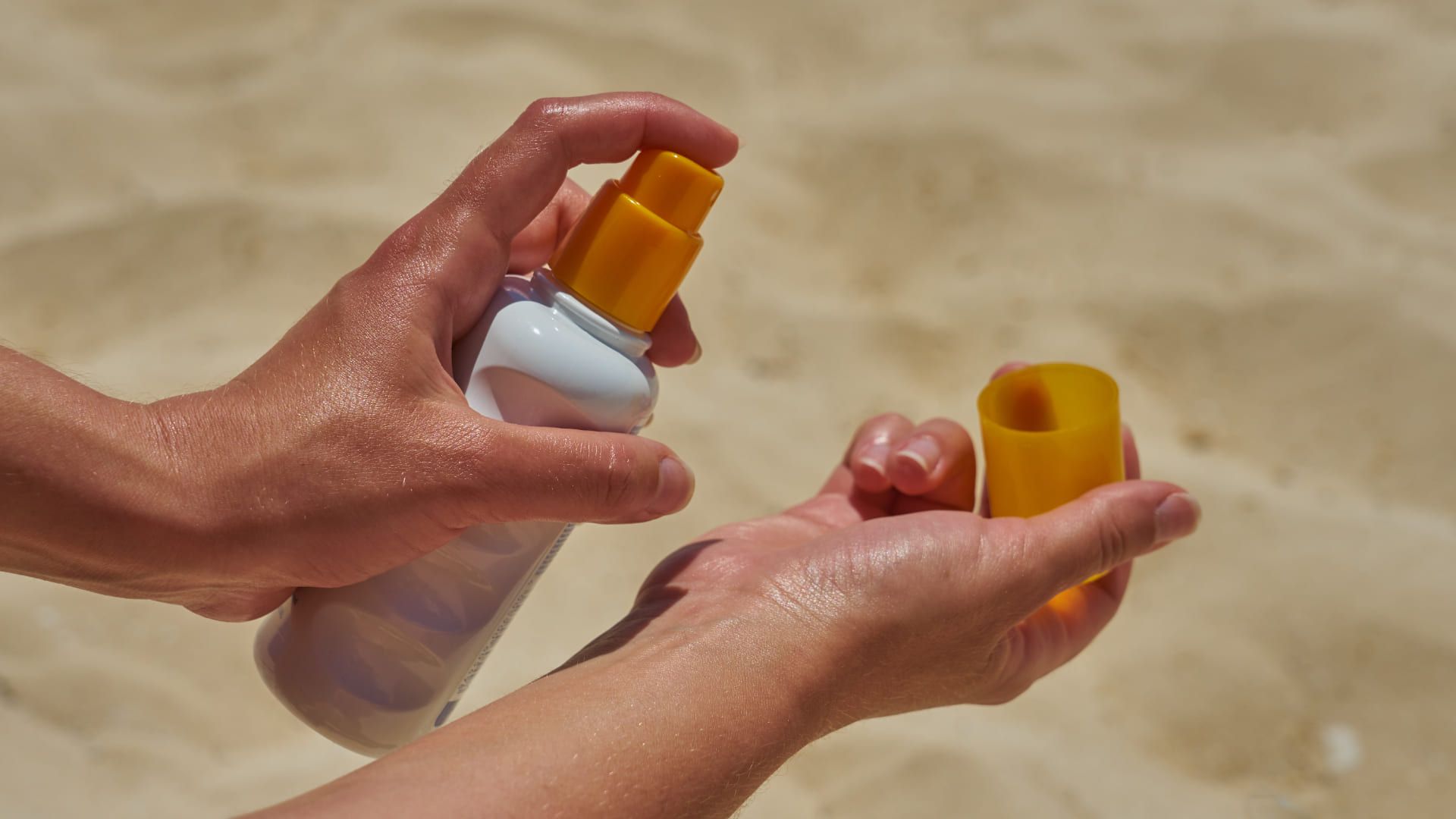Best sunblock for newborns

Sarah Johnson, MD

It's especially crucial to shield your infant from the sun's strong rays if you're going outside with them because their delicate skin is more prone to severe burns.
When the sun is at its hottest, which is between 10 a.m. and 4 p.m., try to avoid being outside or in the shadow as avoidance is the best form of sun protection. If you must go outside in the sun during such hours, make sure you use sunscreen and take additional safety measures.
Here are some tips on when to start baby wearing sunscreen and how to pick a safe product.
When can babies wear sunscreen?
Infants younger than six months old should not use sunscreen, according to the American Academy of Dermatology and the Food and Drug Administration. This is mostly due to the lack of research on the efficacy and safety in such young newborns. Additionally, many sunscreen chemicals can cause rashes or other reactions in infants.
That being said, their skin is particularly vulnerable to scorching ultraviolet (UV) light. The skin of an infant is extremely thin. The skin of a newborn doesn't fully mature until approximately two months of age. Wearing lightweight, long-sleeved shirts and pants, or keeping your baby in the shade as much as possible, are better options for protecting their skin than wearing sunscreen. A hat with a wide brim can protect their neck and face.
After time outdoors, a thin layer of a gentle baby cream can help the skin settle if it looks a bit dry.
better with Soula

Support for every woman:
✅ A Personalized Plan to reduce anxiety and overthinking
✅ 24/7 Emotional Support whenever you need it Cycle-Aligned Mental Health Tracking — monitor your mood and symptoms in sync with your period
✅ Real-Time Insights into your energy levels and emotional state
✅ Bite-Sized Exercises to help you return to a calm, balanced state — anytime, anywhere
Sunscreen is sometimes necessary, even for infants younger than six months. Applying a small amount of sunscreen is preferable to letting them burn. (A baby's sunburn can be quite dangerous. Dial your pediatrician if your child sustains sunburn.) When my children were young, we always applied sunscreen to exposed skin, especially when they would be outside in the intense sun at a high altitude in the mountains. Instead of applying it all over them, we used it sparingly to provide their complete protection.
How much sunscreen should baby wear?
It depends on your child's age:
- For babies 6 months and older - At least half a shot glass of sunscreen should be applied liberally to any exposed skin 15 to 30 minutes before you go outside. Don't cut corners; in this instance, more is definitely preferable.
- For babies under 6 months old - On exposed regions, a modest application of sunscreen is advised. Give your nose and ears extra care, and use lip balm with an SPF of 15 or higher to protect your lips. If your sunscreen is waterproof, reapply it every two hours. If not, reapply it more frequently, especially if you spend a lot of time outside, your infant gets wet, or the sunscreen isn't water-resistant. Just remember that even waterproof sunscreen loses its effectiveness after swimming or perspiring, and that it can take up to half an hour for it to take effect.
If you’re also navigating skin changes yourself, these notes on safe skin care in pregnancy may be helpful.
What kind of sunscreen is safe for baby?
Certain sunscreens are safer than others for your child. The following advice will help you purchase a product that is both secure and efficient:
- Even if your child won't be getting wet, try to select a waterproof formula designed especially for newborns or young children.
- Make sure there is zinc oxide and titanium dioxide in the ingredients to avoid rashes. Unlike chemical sunscreens, which soak into the skin, these hypoallergenic components remain on the surface of the skin.
- It should be labeled as "broad-spectrum," which indicates that it offers protection from UVA and UVB radiation.
- Choose an SPF of between 30 and 50 (never less than 15). Experts advise avoiding using products with SPFs higher than 50 since they might not be any more effective than those with lower SPFs and might give parents the false impression that they don't need to reapply as frequently.
- Steer clear of sunscreens with insect repellents as they are less effective. Purchase repellant separately and only spray it on after applying sunscreen if you require it and your infant is older than two months and your pediatrician gives you the all-clear.
On bright days, a wide-brim hat and shade still do most of the work; sunscreen just fills the gaps. If the outing runs long and your little one needs settling, a soft, breastfeeding-friendly pacifier can help.
Tips for protecting babies from the sun
Are you going to take your little one outside for some quality time? Take the following precautions to shield her from the heat and sun:
- Avoid the sun as much as you can between the hours of 10 a.m. and 4 p.m., when it is at its fiercest.
- Wear loose, tightly-fitting clothing that covers as much skin as possible—nothing see-through, please. Additionally, you can get sunblock apparel with unique fabric that offers superior skin protection. Children benefit greatly from rashguards at the beach or while swimming.
- Remember to include a wide-brimmed hat (assuming your child will wear it!) Additionally, if your child consents, you should put on sunglasses that block UVA and UVB radiation. Sunlight can lift energy but also feel overstimulating at times — here’s a short read on how light exposure and anxiety interact.
- Never cover the top of the stroller with a blanket to avoid the risk of overheating and suffocation. Instead, protect your child with the shade provided by the stroller, or increase coverage with an additional parasol attached to the side.
- If your baby is younger than six months old, make sure she gets her fluids from breast milk or formula; if she is older than six months, give her milk and a little water. On days that feel a bit heavy, small routines outdoors plus calm breaks can help — here are a few gentle ways to lift mood.
Finally, be smart about spending time in the hot summer sun. Watch for signs of dehydration (fussiness, redness, excessive crying) and signs of sunburn. If your child's skin does get red or burned, move her to the shade right away and apply a cold compress to the pink patches as soon as you can.
If your baby does look like she may have gotten a sunburn after some time has passed, or you have other questions about baby sun exposure, talk to your pediatrician.
And if sunny days ever feel overwhelming — whether it’s the heat, worry, or just the pace of new parenthood — you can always turn to AI Mental Health for gentle, thoughtful support whenever you need a moment to breathe.














